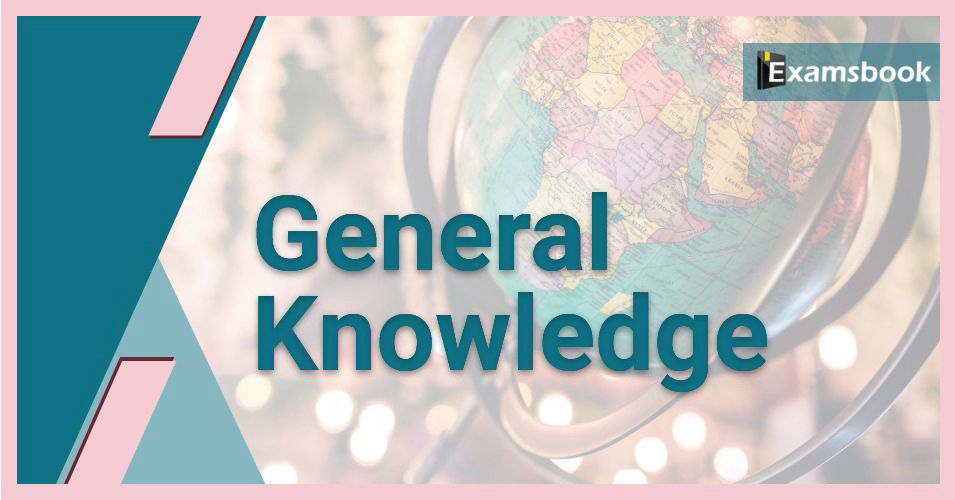General Knowledge (GK) 2023-24: GK Questions, Topics, Mock Test, Practice Quiz

Which of the following is not a principal tool of early Stone age?
(A) Hand axes
(B) Cleavers
(C) Choppers
(D) Scraper
Correct Answer : D
Explanation :
Scraper is not considered a principal tool of the early Stone Age. Hand axes, cleavers, and choppers are examples of tools that were commonly used during the early Stone Age for various purposes, including cutting and processing materials. Scraper tools are more commonly associated with the later stages of the Stone Age and were used for tasks like scraping and smoothing surfaces.
Where is Muslim mosque situated where an heir of pagamber Mohammad Saheb has been preserved?
(A) Ajmer
(B) Ahmedabad
(C) Srinagar
(D) Mecca
Correct Answer : C
Who among the following constructed the Brihadeeswarar temple at Tanjore ?
(A) Rajendra I
(B) Raja Raja Chola I
(C) Parantaka Chola I
(D) None of them
Correct Answer : B
Explanation :
Raja Raja Chola I, the great Chola emperor, constructed the Brihadeeswarar Temple at Tanjore (now known as Thanjavur) in the Indian state of Tamil Nadu. The temple, also known as the Peruvudaiyar Kovil, is one of the largest and most magnificent temples in India, showcasing the grandeur of Chola architecture. The construction of the Brihadeeswarar Temple was completed in 1010 CE.
Who among the following captured the whole of Sri Lanka and made it a part of Chola empire.
(A) Rajendra I
(B) Raja Raja Chola I
(C) Parantaka Chola I
(D) None of them
Correct Answer : A
Explanation :
Rajendra I, the son of Raja Raja Chola I, is credited with capturing the whole of Sri Lanka and making it a part of the Chola Empire. He undertook successful military campaigns, extending Chola influence beyond the Indian subcontinent.
Which Charter Act brought to an end, the East India Company's monopoly in India's foreign trade?
(A) Charter Act of 1853 / 1853
(B) Charter Act of 1793 / 1793
(C) Charter Act of 1813 / 1813
(D) Charter Act of 1833 / 1833
Correct Answer : C
Explanation :
The Charter Act of 1813 brought an end to the East India Company's monopoly in India's foreign trade. This act marked a significant shift in British India's economic policies, allowing Indian trade to be opened to private enterprise and foreign traders, breaking the monopoly that the East India Company had held over trade activities.
Who among the following had written Laila Majnu and Tughlaq Nama ?
(A) Amir Khusru
(B) Ghazi Malik
(C) Juna khan
(D) None of these
Correct Answer : A
Explanation :
The works "Laila Majnu" and "Tughlaq Nama" are attributed to the Persian and Urdu poet Amir Khusrau. Amir Khusrau was a prominent figure in the medieval Indian literary and cultural landscape during the Delhi Sultanate. "Laila Majnu" is a tragic love story, and "Tughlaq Nama" is a historical work that provides an account of the reign of the Delhi Sultanate ruler Muhammad bin Tughlaq.
Whose part was Gandhiji's 'Dandi March'?
(A) Non-Cooperation Movement
(B) Self government league
(C) Civil disobedience movement
(D) Quit India Movement
Correct Answer : C
In which of the following phase flint tools were used?
(A) Early Paleolithic Age
(B) Middle Paleolithic Age
(C) Upper Paleolithic Age
(D) Mesolithic age
Correct Answer : C
The declaration of the Rights of Man is related with ?
(A) The Russian Revolution
(B) The French Revolution
(C) The American War of independence
(D) The Glorious Revolution of England
Correct Answer : B
Explanation :
The Declaration of the Rights of Man and of the Citizen is associated with the French Revolution. It was adopted by the National Constituent Assembly in France on August 26, 1789. The declaration was a fundamental document that proclaimed the basic rights and principles of equality, liberty, and fraternity for all citizens.
The policy of imperial preferences adopted by Britain in its colonies in 1932 is also known as the
(A) Hong Kong Agreement
(B) London Agreement
(C) Ottawa Agreement
(D) Paris Agreement
Correct Answer : C
Explanation :
The policy of imperial preferences adopted by Britain in its colonies in 1932 is also known as the Ottawa Agreement. This agreement was a series of bilateral trade agreements between the United Kingdom and various members of the British Empire, including Canada, Australia, South Africa, and New Zealand. The agreements aimed to promote trade within the British Empire by providing preferential treatment to goods from member countries.



